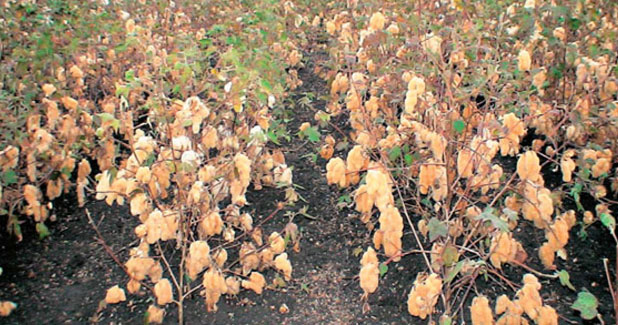
Natural colour cotton fabrics & made-ups
Natural colour cottons are environmental friendly material. Among the four cultivated species of cotton, colour lint is reported in G.arboreum among diploid and in G.hirsutum in tetraploid cottons. White G. barbadense are inherently superior sources of fibre quality and white G. hirsutum cottons are a source of both yield and fibre quality and these have been used for improvement of colour cotton.
Coloured cottons are gaining popularity in view of their ecofriendly nature, feel Dr Sannapapamma KJ, Dr Jyothi V Vastrad, Dr Manjula M and Dr SS Patil.
Natural colour cottons are environmental friendly material. Among the four cultivated species of cotton, colour lint is reported in G.arboreum among diploid and in G.hirsutum in tetraploid cottons. White G. barbadense are inherently superior sources of fibre quality and white G. hirsutum cottons are a source of both yield and fibre quality and these have been used for improvement of colour cotton. Of the cultivated colour cotton shades, brown and green are the most common ones. The recent investigations in brown cottons highlighted various positive features like higher lint yield, acceptable fibre quality, spinnability, colour stability, better strength and pigmentation on scouring and mercerisation. These inventions further expanded the utility and application of colour linted cotton for production of furnishing and house textiles.
Naturally coloured cotton reduce the formation of crisis in the eco system, makes it eco-supportive and favourable. It eliminates bleaching and dyeing process, wherein large amount of effluents discharged from the industry create environmental pollution. Compared to white cotton, Natural colour cotton is shorter, courser and weaker, thus submissive to hand spinning suitable for production of coarser khadi fabrics, that inturn has reduced commercial application. To overcome this problem, Naturally Coloured Cotton can be blended with other natural and synthetic fibres that certainly impart positive qualities like strength, fineness, evenness and reduce the total yarn imperfection. Blended yarns were further utilised for the production of eco friendly fabrics. To meet the needs of dynamic consumer, commercialisation of naturally colour cottons are of acute importance. Hence, the present study focussed on spinning, weaving and quality parameters of natural colour cotton Pure and blended fabrics.
Material and methods
Selection of naturally coloured cotton lint: The medium brown (MB 225) natural colour cotton (Gossypium hirsutum) was procured from Agricultural Research Station, Hebballi, University of Agricultural Sciences, Dharwad.
Selection of polyester: Polyester staple fibre with cut length of 33 cm and fineness of 1.4 d was obtained from Bombay Textile Mill for blending.
Mill spinning of natural coloured cotton: Mill spinning of naturally coloured cotton is first of its kind and researcher made an effort to spin shorter and coarser coloured cotton fibre through commercial cotton mill spinning techniques with varied counts ranging from 20s to 60s by meagre addition of polyester (33 percent).
It was further utilised for production of finer fabrics and made-ups. Commercial cotton mill spinning stages are Bale opening- Cleaning and Blending (67:33)- Lap formation-Carding-Combing-Drawing-Roving-Spinning- Doubling ? Cone winding-Packing.
Production of mill spun natural coloured cotton yarn (Pure): The medium brown natural colour cotton (MB -225) lints were subjected to mill spun at Shri Krishna Spinning Mill, Hubli.
The rove was mill spun into single yarn of 20s count with 1,800 CSP.
Production of natural colour cotton blended yarns: Spinning was accomplished by the traditional blow room method wherein both cotton and polyester in the respective quantities were mixed thoroughly by blow/air-flow method.
The lap of the mixture was later subjected to carding, combing, roving, drawing and spinning. Processes resembled the<


